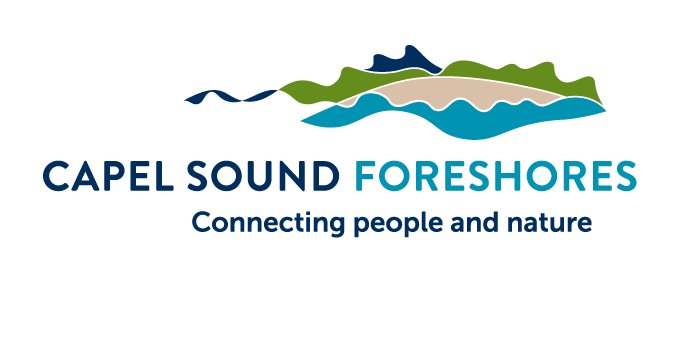Restoring and protecting the coastal environment is the primary goal in managing Capel Sound Foreshores.
Vegetation
Ecological vegetation classes (EVC's) are used to describe vegetation assemblages across Victoria. Up to five flora species of State Significance have been recorded, along with at least twenty four species of Regional Significance.
Capel Foreshores Flora Survey 2007 and the Vegetation Benchmark Report 2017 identified six EVC’s outlined in the table below. Species of High Local Significance are those for which only a few individuals are known locally along the surveyed area of the foreshore reserve.
At a state level the status of these EVC’s has not changed and allowing for seasonal differences nearly all the Significant Flora Species detected in 2007 were present in 2017. Capel Sound Foreshore supports a number of EVC’s, some of which overlap to form a mosaic or are so distributed they are hard to define. The Capel Sound Foreshore Flora Survey 2007 and the Vegetation Benchmark Report 2017 identified six EVC’s;
EVC Descriptor Status
EVC 002 Coast Banksia Woodland Vulnerable
EVC 053 Swamp Scrub Endangered
EVC 160 Coastal Dune Scrub Least Concern
EVC 311 Berm Grassy Scrubland Endangered
EVC 858 Coastal Alkaline Scrub Depleted
EVC 879 Coastal Dune Grassland Endangered
In 2007, up to five flora species of State significance were recorded, along with at least twenty four species of Regional significance. Species of High Local significance are those for which only a few individuals are known locally along the surveyed area of the foreshore reserve.
In 2017, five flora species of State significance were also recorded, plus twenty five species of Regional significance.
At a state level the status of these EVC’s has not changed and allowing for seasonal differences nearly all the Significant Flora Species detected in 2007 were present in 2017.
Fauna
An extensive study of fauna on Capel Sound Foreshores was carried out in 2006/2007. The field study reported on the following key ecological values in the foreshore reserve and found:
73 species of native fauna and 9 species of introduced fauna
1 species of Decapod crustacean,
6 species of fish of which one species is introduced,
4 species of amphibian,
8 species of reptiles, of which all of which are lizards,
49 species of birds, of which 4 species are introduced,
14 species of mammals, of which 4 species are introduced.
More recently the Fauna Survey of Capel Sound Foreshore Reserve 2022 was undertaken. The field study identified the following key ecological values in the foreshore reserve:
75 species of native fauna and eight species of introduced fauna:
4 species of fish,
4 amphibian species,
9 reptile species: 1 tortoise, 7 lizards and 1 snake,
53 bird species, including 4 introduced,
14 mammal species, including 4 introduced.
Five State Significant species were recorded of which one species is listed under the state Flora and Fauna Guarantee Act 1988 (FFG Act) as threatened.
A further twelve species recorded are considered to be of Regional Significance, and three species recorded are of High Local Significance.
Biodiversity
The data gathered over the last 15 years on the Capel Sound Foreshores flora and fauna highlight that local species are considered significant due to the depletion of remnant coastal vegetation around Port Phillip and coastal alkaline scrub within the state.
Due to significant population and habitat losses across the Mornington Peninsula, remaining flora and fauna can also be considered of local significance. Weeds, vermin, and human disturbance continue to be the greatest causes of local extinction of flora and fauna populations on the peninsula. By undertaking works based on contemporary information and addressing pressures on species and habitats Capel Sound Foreshore continues to play an important role in coastal biodiversity conservation.















